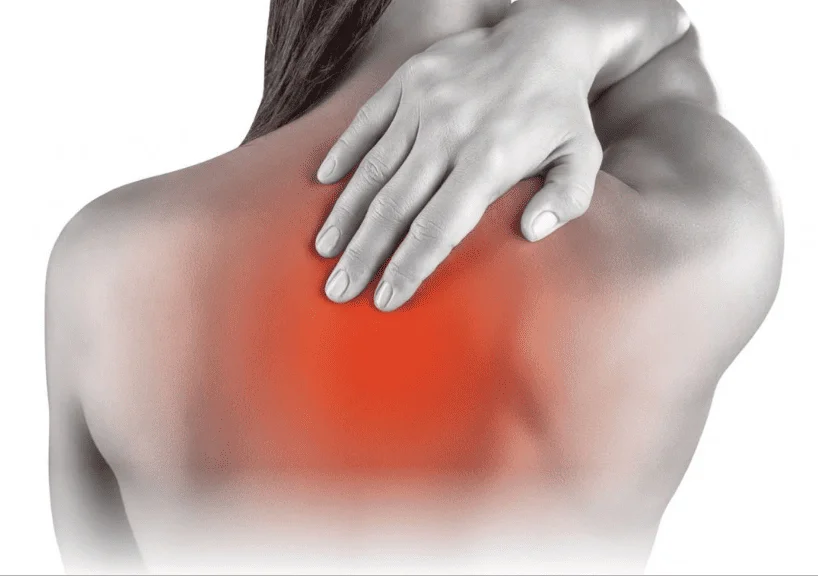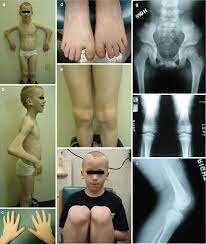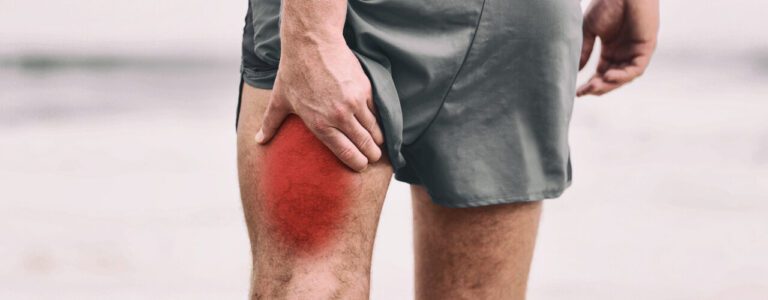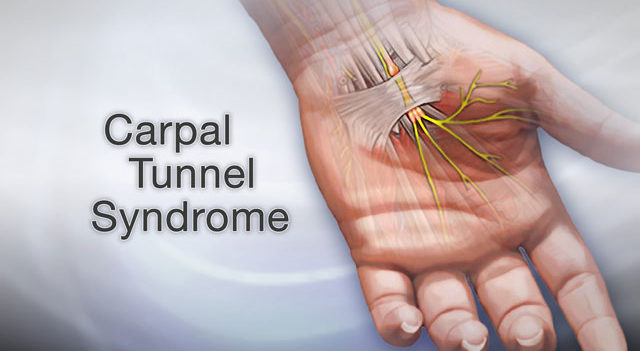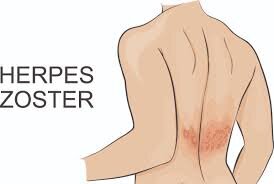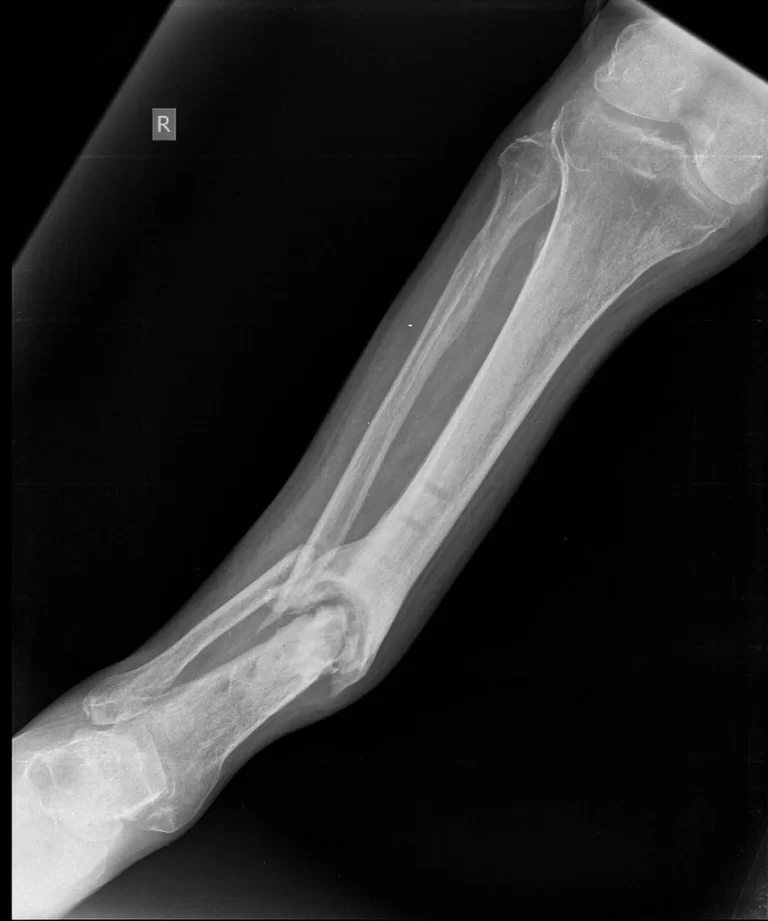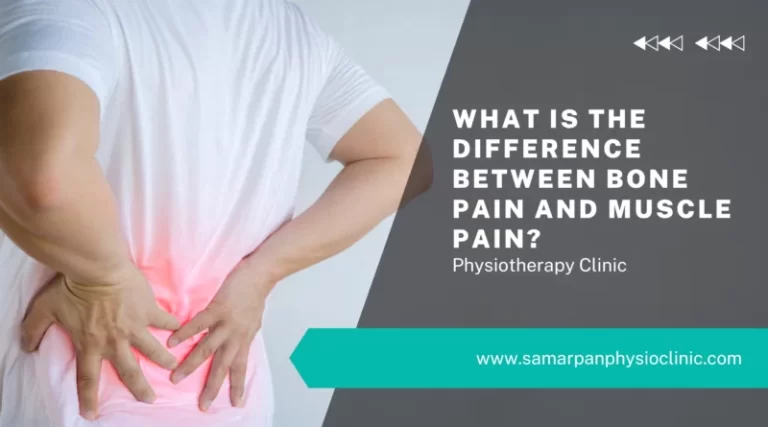Muscle Pain In The Upper Back
When you feel pain in the upper back during some daily activities or weekend-warrior activity.
You also feel tightness & spasms in the upper back muscle.
This pain is produced due to many reasons like neck muscle strain, and injury.
This muscle pain is released by to RICE principle, pain medication & physiotherapy treatment.
Table of Contents
What Is the Upper Back?
- This upper back is the region which is located below the cervical spine – neck & above the low back – lumbar spine.
- Sometimes the upper back is known as the thoracic spine & which is the most stable part of the spine.
- The ROM of the upper back is limited because of this spine’s attachments to the ribs.
- Some muscles around the upper back :
- The trapezius muscle = is located near your shoulder blade which helps you stand straight & throw.
- Latissimus dorsi = it is located lower on your back which is help with arm movement & breathing.
- Rhomboids = it is Adjacent to the trapezius muscle which is given to support your shoulder joint & help you pull.
What are the causes of upper back muscle pain?
- This muscle pain occurs usually due to soft tissue injuries like sprains & strains.
- This pain also occurs due to muscle tension which is produced due to poor posture & looking downward for long periods.
- Text neck:
- Poor posture & text neck combine to wreck your upper back which is lead to muscle pain.
- Common behaviors activities:
- Some daily activities which produce upper back pain include:
- Twisting activities
- Poor posture
- Text neck
- This pain is also produced due to whiplash or another neck injury.
- When you lift something improperly it leads to muscle pain.
- If you overuse & apply to overloading on the muscle pain.
- When you do the repetitive movements of the upper back pain.
- Contact sports injury which is lead to upper back muscle pain :
- If you carry a too heavy a load.
- When you wear an overloaded backpack.
- Traumatic injury:
- A traumatic injury which is lead to upper back pain.
- Some traumatic injuries include :
- Slipping & falling
- Car accidents
- Lifting incorrectly
- Some work-related accidents
- When you do work out too hard
- Some other causes of the muscle pain include :
- Various forms of arthritis
- Herniated disc
- Osteoporosis
- Inflammatory conditions like as ankylosing spondylitis
- Spinal stenosis
- Fracture of a vertebrae
- Sometimes Cancer that affects the spine
- Spinal deformity
- Problematic kyphosis
- Scoliosis
- Fibromyalgia
What are the symptoms of upper back muscle injury?
When occur to any injury in the upper back during the daily or weekend-warrior activity, you feel symptoms include:
- In most of the injury, you feel pain in the injury site
- You also feel tightness & stiffness in the muscle pain area.
- You feel tenderness during the touch
- Sometimes you feel to headache
- You feel numbness & weakness in your legs.
- Sometimes you feel soreness in the upper back pain after a workout.
- When the disc of the thoracic spine is affected it is lead to sometimes Incontinence means bowel or bladder leakage.
- You also observed swellings & spasms in the muscle pain area.
How do you diagnose upper back pain?
- When you meet to doctor for upper back pain, the doctor asks some questions to try to know about the causes of the muscle pain.
- Then asked to give the rank of their pain on the pain scale.
- The doctor is also performing a physical exam including palpating for swellings & muscle strength or ROM of the upper back muscle.
Then the doctor is advised on some tests for further diagnosis :
- MRI or CT scans & X-rays:
- These scans are helpful to you for doctors a picture of both bone problems and soft-tissue injury.
- It is helpful in the diagnosis of herniated disks & problems with muscles, nerves, ligaments & more.
- Blood tests:
- Blood tests help to doctor to show infection & any abnormalities of diseases, like rheumatoid arthritis & certain types of cancer.
- Bone density test :
- It is also known as a DXA (or DEXA) test, which measures your bone mineral density so that it helps to determine the risk for osteoporosis.
- Nerve studies :
- Electromyography – EMG = is a type of nerve study which measures the activity of the nerve.
- It is helpful to your doctor for diagnosis of a herniated disc or spinal stenosis means narrowing of your spinal canal.
What are the risk factors for upper back muscle pain?
- When you do not exercise it is one of several factors which increases your risk of upper back muscle pain.
- Excess weight:
- Your spine supports the weight in your torso so that excess weight is applied to stress your back.
- Psychological conditions:
- Sometimes this muscle pain is also produced due to depression & anxiety.
- So in some cases, psychological conditions become to risk factor for muscle pain.
- Belly fat:
- It is particular problem which is lead to the risk factor of upper back muscle pain.
- When you carry a lot of weight in your midsection, it is lead to strain on the soft tissues of your back.
- Smoking:
- This bad habit also leads to muscle pain.
What is the treatment for upper back muscle pain?
RICE principle:
When you feel pain in the upper back muscle doctor is advised to RICE principle as home treatment or primary treatment.
- R – rest = When you feel muscle pain doctor is advice to you rest for sometimes form activities for release to muscle pain.
- I- ice = You are applied to ice on the area of the pain for the 20 minutes, release to swellings & muscle pain but always applied to the ice with the help of a towel between the skin & ice to prevent ice burn, you can also be used to ice pack & frozen peas for ice therapy.
- C- compression = You can also apply compression bandage release to muscle pain & swelling.
- E- elevation = it is not possible for neck muscle because it increases the pain but always use to soft pillow during sleeping.
Pain medication:
- In many cases of muscle pain, the doctor prescribes anti-inflammatory & muscle relaxant drugs.
- When a doctor suspects this muscle pain is due to depression then the doctor is advised to an anti-depressant drug but not take it longer-term.
- An opioid is advised for severe pain but this drug is also not recommended for long periods – 7 to 10 days.
- You can also apply pain reliving gel & spray like volini gel & spray on the area of muscle pain to release muscle pain & swellings.
Injections :
- A trigger point injection is a direct shot of powerful pain medicine.
- It helps to you relieve the muscle pain & swelling.
What is Physiotherapy treatment for upper back muscle pain?
When the muscle pain is not relieved after the home treatment & pain medication then the doctor has advised physiotherapy treatment to release muscle pain.
Physiotherapy treatment is help you relieve pain, swelling, spam & tightness of the muscle pain.
The physiotherapy treatment includes massage, electrotherapy treatment & exercise therapy.
Massage:
- When the trigger & tender points are present in the muscle pain area therapist is advised to massage therapy release to the muscle pain.
- Massage is applied after 2 – 3 days of following the RICE principle when you feel to release of the pain.
- Massage is applied with the help of the oil & applied for 5 -10 minutes.
- Massage is applied 3 times per day at home.
Electrotherapy treatment:
After the RICE principle, pain medication & massage if the muscle pain is not relieved then used Electrotherapy treatment for released to muscle pain.
To relive the swellings, spams & pain therapist is advised to you electrotherapy treatment.
In electrotherapy, the treatment therapist is used to many machines.
- When the trigger & tender points are present therapists are advised & to apply US = ultrasound therapy for the release of muscle pain.
- This treatment is applied with the help of gel & applies for 5 to 10 minutes on the area of pain.
- This therapy helps you release pain & swelling.
- Reduce to pain therapist is applied to SWD = short wave diathermy, IFT = Interferential Therapy, TENS = Transcutaneous Electrical Nerve Stimulation on the area of pain.
- SWD = Short wave diathermy is hot therapy for release to spams on the area of pain.
- IFT = Interferential Therapy & TENS = Transcutaneous Electrical Nerve Stimulation is applied with the help of gel & electrodes on the area of pain.
- This therapy is applied for 10 minutes to the area of pain.
Exercise therapy for upper back muscles pain:
After following the RICE principle for the 2- 3 days at home & primary treatment & the help of pain medication, you feel released from the pain.
When you feel too comfortable & release from your muscle pain then the physiotherapist is advised to you exercise therapy reduce to muscle weakness & tightness.
The exercise therapy for muscle pain includes Stretching & strengthening Exercises.
Stretching exercise helps to relieve muscle tightness as well as strengthening Exercise is help you relieve muscle weakness.
Stretching exercise:
After the follow-up Electrotherapy for 2-3 days for release to muscle pain by the physiotherapist then the therapist is advised to stretch for release to muscle tightness.
This stretching is applied when your pain is released & when you feel comfortable.
- Child’s Pose
- Butterfly
- Upper trapezius stretch
- Levator scapulae stretch
- Trunk rotation
- Overhead arm reach
- Wall stretch
- Lat side stretch
Child’s Pose:
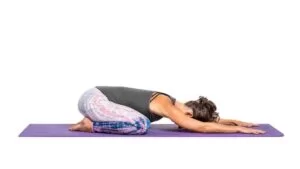
- Start this exercise on the floor on all fours.
- With your big toes touching spread your knee joint as far apart as go & sit your glutes back onto your feet.
- You are sitting straight up with your arms extended above your head.
- On the next exhale, hinge at the waist & drop your upper body forward between your legs.
- Try to Allow your forehead to touch the floor & your shoulder joint to spread & your glutes muscle to sink back.
- Hold this exercise for at least 10 seconds.
- Perform 3 times in 1 set & 3 sets per day.
Butterfly:
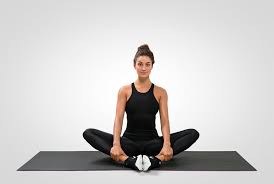
- You are Place your palms on opposite shoulders & bring your elbow joints together to touch.
- Hold this exercise for 10–20 seconds.
- Perform 3 times in 1 set & 3 sets per day.
Upper trapezius stretch:
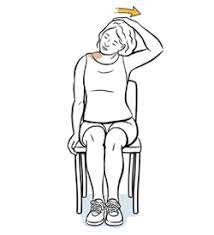
- This stretching is performed in a standing position straight & sitting position in a chair.
- Take your right hand & place the hand on the back of your head.
- Then try to take your left hand & tuck it behind your back.
- You are using your right hand & gently pulling your head toward your right shoulder joint.
- Hold this stretching position for 30 seconds.
- Perform 3 times in 1 set & 3 sets per day.
Levator scapulae stretch:
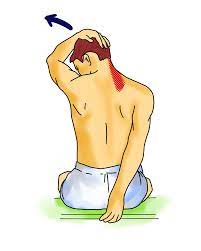
- This stretching is performed in a standing position straight & sitting position in a chair.
- Try to turn your neck 45 degrees to the left.
- Then Bend your neck downward.
- You also use your left hand for a greater stretch.
- Hold this stretching position for 30 seconds.
- Perform 3 times in 1 set & 3 sets per day.
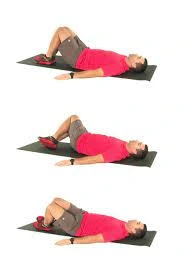
Trunk rotation:
- You are lying on the back with the knee joint bent & the feet flat.
- Keep the knee joint bent & gently rotate them to the right side.
- Hold this stretching position for a few seconds.
- Then return the knee joint to the center.
- Hold this stretching position for 30 seconds.
- Perform 3 times in 1 set & 3 sets per day.
Overhead arm reach:
- Start this exercise with a sitting or standing position.
- Try to stretch the arms above the head.
- Then Lean to the right side & must keep both arms stretched upward.
- After that return to the starting position.
- Perform 3 times in 1 set & 3 sets per day.
Wall stretch:
- You are standing with the right side of the body facing a wall.
- Try to bend the right arm at the elbow joint & place the forearm against the wall.
- The upper arm is completely straight so that the elbow joint forms at a 90-degree angle.
- Gently take a step forward with the right foot &twist to the left.
- Then allow the right shoulder joint & upper back to stretch.
- Hold this stretching position for 30 seconds & return to the starting position.
- Perform 3 times in 1 set & 3 sets per day.
Lat side stretches:
- This stretching exercise standing position & with arms raised overhead.
- Grasp the left wrist with the right hand.
- Then gently lean to the right with a rainbow movement.
- This stretch is assisted by gently pulling on the wrist.
- Hold for the stretching position for 30 seconds.
- Perform 3 times in 1 set & 3 sets per day.
Strengthening Exercises:
After the follow of Electrotherapy & massage for 2 -3 days to release Neck muscle pain by the physiotherapist then the therapist is advised to you do strengthening exercises for Neck muscle weakness.
This strengthening exercise is always advised when you feel to release pain & when you feel comfortable.
This all strengthening exercise helps you muscle weakness & pain.
- Neck roll
- Shoulder roll
- Overhead arm reach
- Chair rotation
- Thoracic extension
- Row
- Face pull
- Scapular squeeze
- Wall angel
- Reverse dumbbell fly
- Lat pulldown
- Reverse fly
- Shrugs
- W retract
Neck roll:
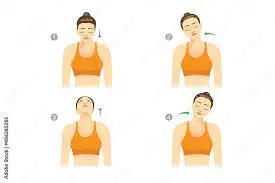
- You are standing & sit facing forward for this exercise.
- Start with tilting your neck to the right.
- You feel the stretch through your neck to your trap muscle.
- After some repetition slowly roll your head counterclockwise.
- Then hold this exercise for 10 seconds
- Repeat this exercise 10 times on one side then repeat this exercise clockwise.
- Perform 10 times in 1 set & 3 sets per day.
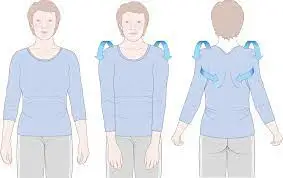
Shoulder roll:
- You are standing with your arms down at your sides.
- Then roll your shoulders backward in a circular motion & complete 10 rotations.
- After that complete 5 rotations forward.
- Perform 10 times in 1 set & 3 sets per day.
Chair rotation:
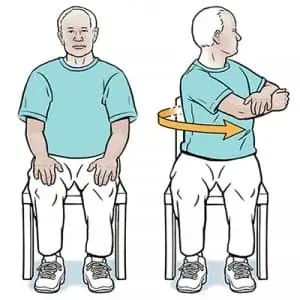
- You are sitting sideways in a chair.
- Your right side is resting against the back of the chair.
- Must keep your legs stationary & rotate your torso to the right which is reaching for the back of the chair with your hands.
- Try to hold your upper body in rotation & use your arms to stretch deeper & deeper as your muscles loosen.
- Perform 10 times in 1 set & 3 sets per day.
Thoracic extension:
- For this exercise use to foam roller or a chair.
- With the foam roller, a foam roller is placed under your thoracic spine then allow your head & glutes muscle to fall on either side then Extend your arms above your head to deepen the stretch.
- With the chair, you sit facing forward & allow your upper body to fall over the back of the chair then extend your arms above your head for to deeper stretch.
- Hold in every position for 10 seconds, then release.
- Perform 10 times in 1 set & 3 sets per day.
Row :
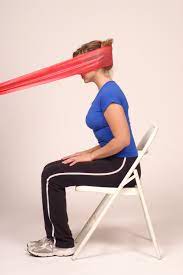
- For this exercise use a resistance band & light to the medium dumbbell.
- First, attach the resistance band to a pole & another stable surface or grab each handle, extending your arms.
- Then pull the handles straight back by bending your elbow joint & must be kept handle close to your body.
- When you are using a dumbbell for this exercise hold the dumbell in your right hand & brace yourself on a wall with your left hand then extended the arm.
- Try to hinge at the waist to a 45-degree angle & allow the dumbbell to hang down.
- Must be Keep your neck neutral & your knee joint soft then pull the dumbbell directly up with a tucked elbow joint.
- Perform 10 times in 1 set & 3 sets per day.
Face pull:
- For this exercise use a resistance band.
- First, attach the band to a stable surface above eye level.
- Grab each handle with an overhand grip.
- Then pull directly toward your face & flaring your upper arms out to the sides or squeeze your shoulder joint together.
- Hold this exercise for sometimes then return to the starting position.
- Perform 10 times in 1 set & 3 sets per day.
Scapular squeeze:
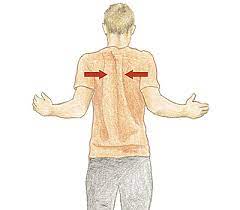
- You are in a standing position with your arms down by your side.
- Then squeeze your shoulder blades together.
- Hold this exercise for 10 seconds.
- Perform 10 times in 1 set & 3 sets per day.
Wall angel:
- You are standing with your back flat against a wall.
- You must need to step your feet out slightly to allow your back to completely soften against the wall.
- Then Extend your arms out & create a “T” shape against the wall & bend your elbow joint to create 90-degree angles.
- Try to Slowly move your arms up & down in a “snow angel” motion.
- Must be ensured that you stay flat against the wall the whole time.
- When your fingers touch above your head & return to the starting position.
- Perform 10 times in 1 set & 3 sets per day.
Reverse dumbbell fly:
- You are held to light dumbbells in hand.
- You are in a standing position then hinged at the waist at a 45-degree angle, with your arms hanging straight down.
- Must be Keep your neck neutral & your gaze down.
- Start with lifting your arms out to the sides & up.
- Squeeze your shoulder joint together at the top of the movement.
- Perform 10 times in 1 set & 3 sets per day.
Lat pulldown:
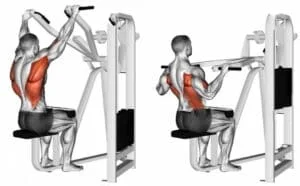
- You are Sit & stand underneath & a resistance band is attached to a stable surface overhead.
- Try to Pull down on the band till your upper arms are parallel to the floor.
- Hold at the bottom & squeeze your lats & return to the starting position.
- Perform 10 times in 1 set & 3 sets per day.
Reverse fly:
- For this exercise use a resistance band in a standing position.
- Must be Keep your elbow joint straight & pull your arms back.
- Keep your hands level at shoulder joint height.
- Hold this exercise position for 10 seconds.
- Perform 10 times in 1 set & 3 sets per day.
Shrugs:
- This shoulder shrugs exercise targets the trapezius muscles,
- This exercise is done either by holding light dumbbells & hand weights or also perform without any weight.
- Then Gently bring your shoulder joint directly up to your ears.
- Hold this exercise for 10 seconds & slowly relax.
- Perform 10 times in 1 set & 3 sets per day.
W retract:
- This exercise starts with a standing position & extends arms up at an angle.
- Then slowly pull them down at a 90-degree angle & making a W shape with the arms by retracting them to the stomach area.
- Try to Squeeze the shoulder blades & hold for ten counts.
- Then release & slowly move back up to the starting position.
- Perform 10 times in 1 set & 3 sets per day.
What is a Surgical treatment for upper back muscle pain?
After the medical treatment & physiotherapy treatment pain is not relieved then the doctor is advised surgical treatment.
Surgery for upper back muscle pain is very rare.
The surgery mostly involves thoracic spine injury.
- Kyphoplasty or vertebroplasty :
- This surgery repairs the compression fractures due to osteoporosis.
- In this surgery, your doctor injects a glue-like bone cement.
- Spinal laminectomy or spinal decompression :
- When your muscle pain is due to spinal stenosis your surgeon removes the bony walls of the vertebrae which are applied to ease pressure on the nerves.
- Microdiscectomy :
- When your muscle pain is the reason a disc bulges & presses on a nerve the doctor is advised that microdiscectomy means minimally invasive removal of a disc or portion of a disc.
- It is the gold standard procedure.
How to Prevent upper back muscle pain?
- It is not possible to prevent all causes of upper back muscle pain, but some easy steps for prevention include :
- Take regular breaks from sitting & lying down to stretch & move to different muscle groups.
- Always take frequent breaks when you are working at a desk to stretch, so the muscles are become to stay loose & strong.
- Always do a few minutes to stretch the muscles & do a warm-up of the body before any activities.
- If you are lifting heavy objects so must avoid twisting & lifting with the back.
- Do regular massages which help you to work out the tension of the muscles.
- During pain Avoid wearing heavy backpacks & purses.
- Always follow a good posture like walking upright & sitting correctly.

